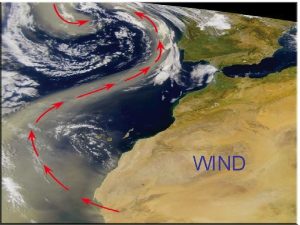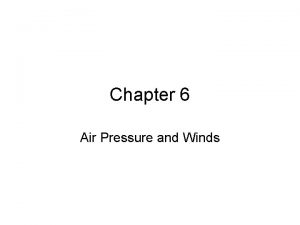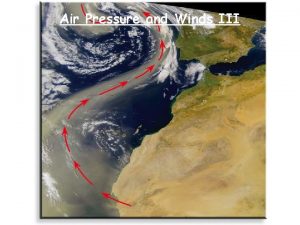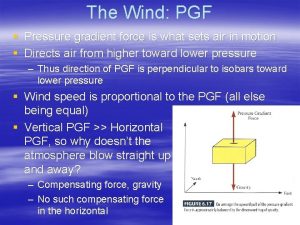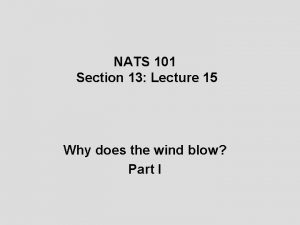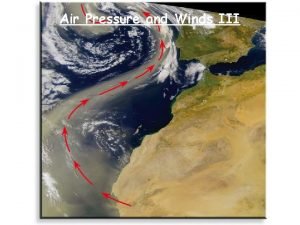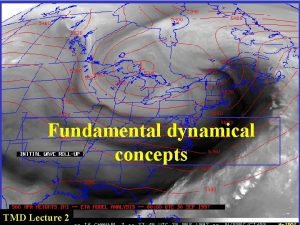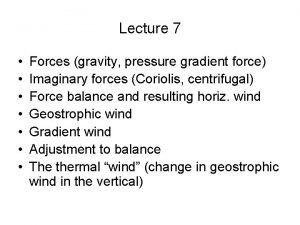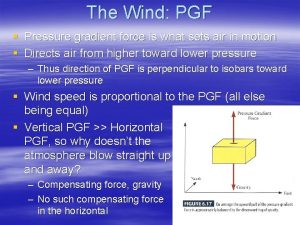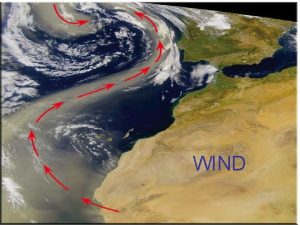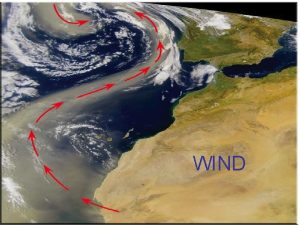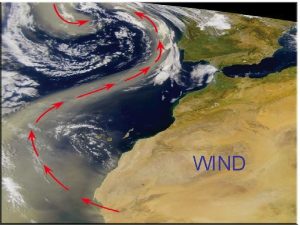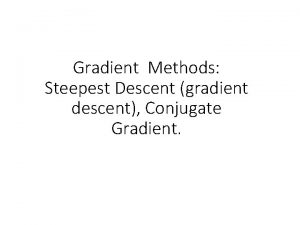The Wind PGF Pressure gradient force is what







- Slides: 7

The Wind: PGF § Pressure gradient force is what sets air in motion § Directs air from higher toward lower pressure – Thus direction of PGF is perpendicular to isobars toward lower pressure § Wind speed is proportional to the PGF (all else being equal) § Vertical PGF >> Horizontal PGF, so why doesn’t the atmosphere blow straight up and away? – Compensating force, gravity – No such compensating force in the horizontal

The Wind: Coriolis Effect § An apparent force that, from our frame of reference, deflects winds to the RIGHT in the northern hemisphere § Always directed 90 degrees to the right of the wind direction (northern hemisphere) § Does not cause motion § Geostrophic Balance – PGF and Coriolis – Wind blows parallel to isobars, low pressure to the left – 90 degrees to right of PGF – Generally applies to the atmosphere well above the ground where there is no FRICTION

The Wind: Friction I Decreases Wind Speed § Friction acts directly opposite the wind direction § Wind speed generally decreases as height above ground decreases § As friction increases, wind speed decreases § Amount of friction depends upon the roughness of the surface; think about air movement above… – – – Forest vs field Mountains vs plains Land vs Water

The Wind: Friction II Alters Wind Direction § Unlike geostrophic flow, wind direction will not turn a full 90 degrees to the right of the PGF § More friction = less turning = greater crossing angle (air will flow across isobars toward lower pressure) – Counterclockwise and inward toward low pressure center – Clockwise and outward from high pressure center

The Wind: Friction II Alters Wind Direction § Low pressure = converging air at surface = rising air = cooling air = increased relative humidity = clouds and precipitation if T cools to dewpoint § High pressure = diverging air at surface = sinking air = warming air = decreased relative humidity = few clouds

The Wind: Mid-Latitude Jet Stream § A relatively narrow channel of fast-moving air in the upper troposphere embedded in the westerlies § A result of horizontal temperature gradients § Stronger in winter than in summer – Greater north-south temperature gradient

Key Figures § 6. 17, 6. 20, 6. 27, 6. 29, 6. 30, 6. 35, 6. 36, 7. 20, 7. 28, 7. 30 § Remember the following facts: – PGF always perpendicular to isobars, from higher toward lower pressure – Coriolis effect always 90 degrees to the right (in the northern hemisphere) of wind direction – Friction always 180 degrees (opposite) the wind direction
